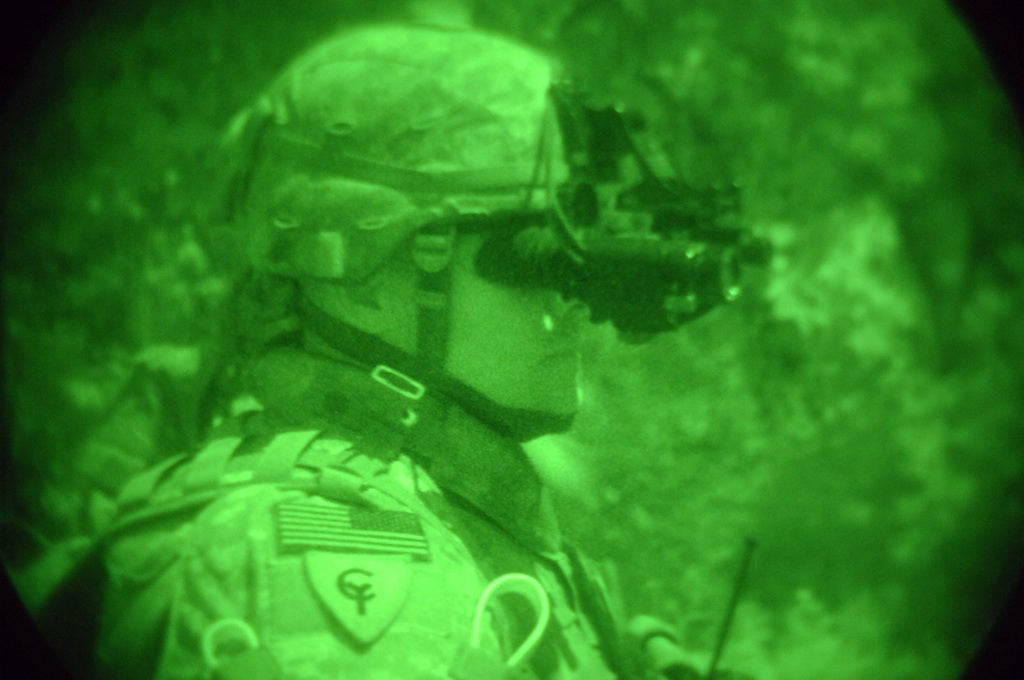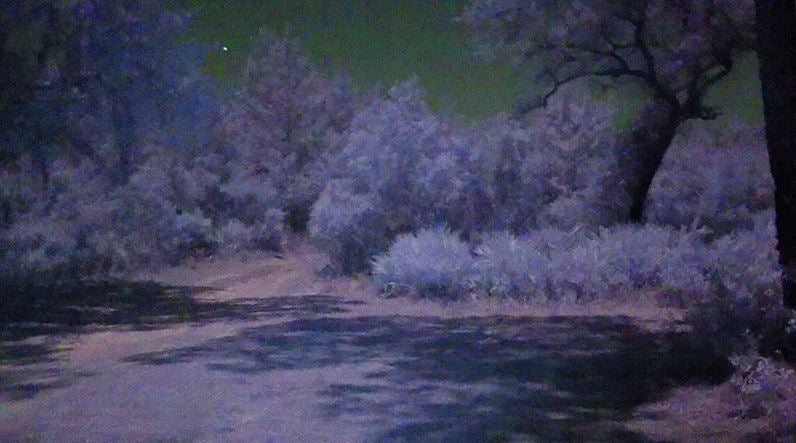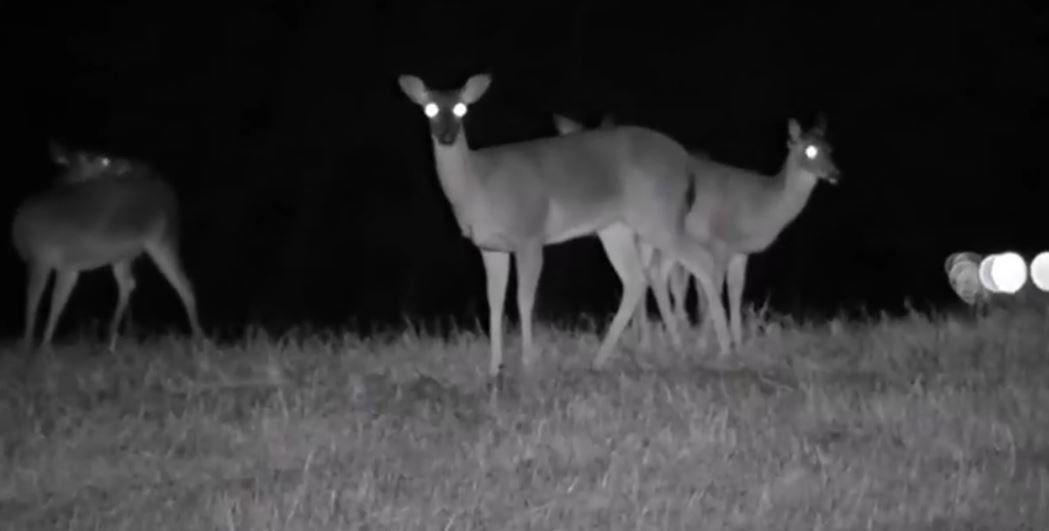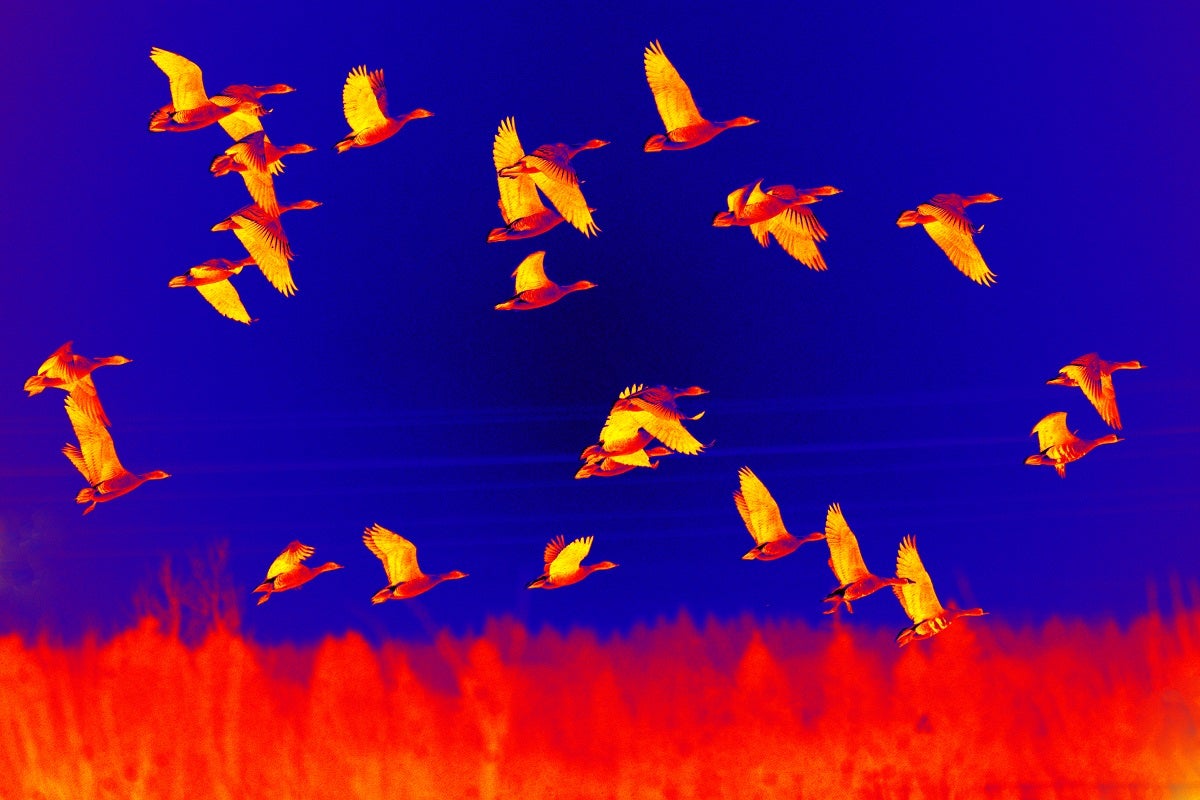Hunting in the Dark – Types of Night Vision Compared
Travis Olander 03.01.23
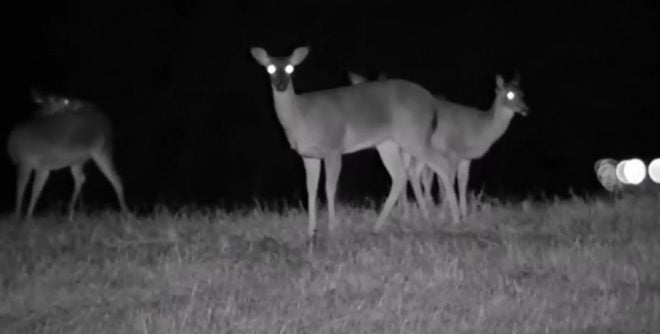
Many folks think night vision is an expensive, niche piece of technology reserved for high-cut helmets and special operators, but if you’ve ever gone on a nighttime hog hunt, you know just how critically important a good NVG (night vision goggle) setup can be. Many states (like Missouri) are now allowing thermal and night vision optics for hunting. There are a lot of options to pick from though. Some are cheap while some are as expensive as a new-model, preowned vehicle. Many fall somewhere in between – what’s best? Let’s compare the types of night vision you might consider for hunting, scouting, or simply for the tech itself.
Night Vision – Image Intensifier NVGs
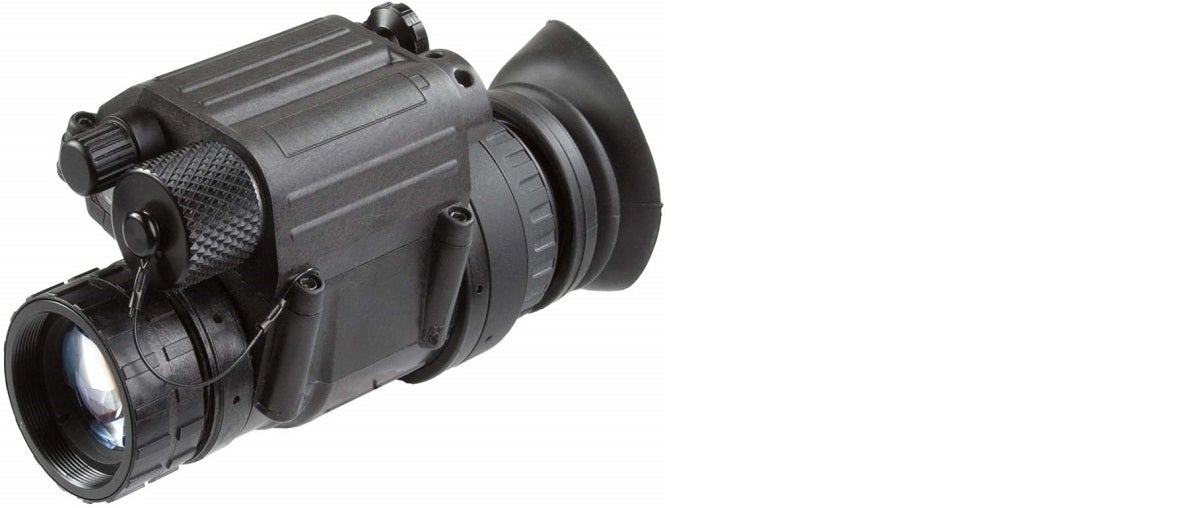
Image intensifiers are what everybody pictures in their heads when they hear the phrase “night vision.” These types of NVGs (like the popular PVS-14 monocular) are what military operators and pilots use.
Image intensifiers rely on two components: A photocathode, which captures photons of light and converts them into electrons, and a microchannel plate, which amplifies those electrons and converts them back into photons, producing a brighter image.
Pros
Image intensifiers remain the gold standard for high-resolution, latency-free, compact night vision. Many image-intensifying NVGs are in their third generation of development. Third-gen units produce bright, high-contrast images in very dark conditions. Because of their light weight and primarily analog functionality, these NVGs are perfect for nighttime hunting. They’re easy to operate, they have zero latency and, when autogated, they’ll automatically adjust brightness and contrast to meet the needs of the user based on the available ambient light.
Cons
Image-intensifying NVGs are wickedly expensive. A blemished monocular (like an old-generation PVS-14 with a “dirty tube”) often demands $2,500. Third-gen, military-grade binoculars can easily exceed $10,000.
Night Vision – Digital Night Vision
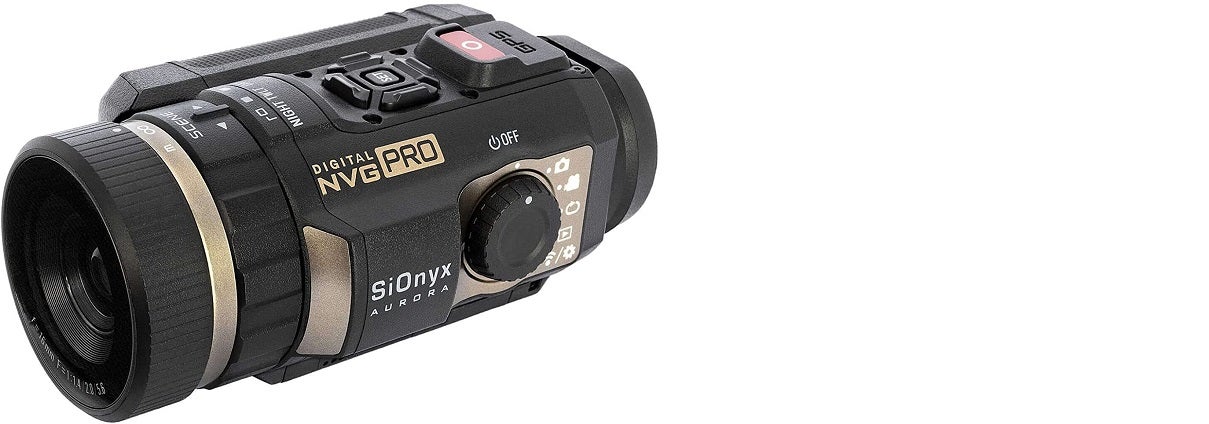
Digital NVGs function using the same principle as image-intensifying tubes: They take what little ambient light is available, collect it through a focused lens, and amplify that light to produce a brighter, higher-contrast image.
The major difference, though, is that digital NVGs function much like the smartphone cameras of today. Their sensors simply read what photons are available, and ramp up the brightness and contrast – kind of like dialing up the exposure to maximum on a DSLR.
Pros
Digital NVGs rely on proven technology that’s not much different from most digital photography cameras. That means they’re easy to make, and they’re affordable. High-quality units that produce great images in low light cost under $1,000. The intensified image is in always full color, and contrast can be greatly amplified to display even better clarity against backdrops and open fields.
Cons
Digital NVGs rely on camera sensors, processors, and memory modules. That makes them bulky and more delicate than other types of night vision devices. Because the image being amplified has to be processed, there is always a level of built-in latency, too. That means digital night vision is not ideal for use with rifle optics. If you’re hunting at night, you need instant targeting data to take an accurate shot. In this case, digital NVGs are better suited for scouting and observing.
Night Vision – IR-Illuminated Night Vision
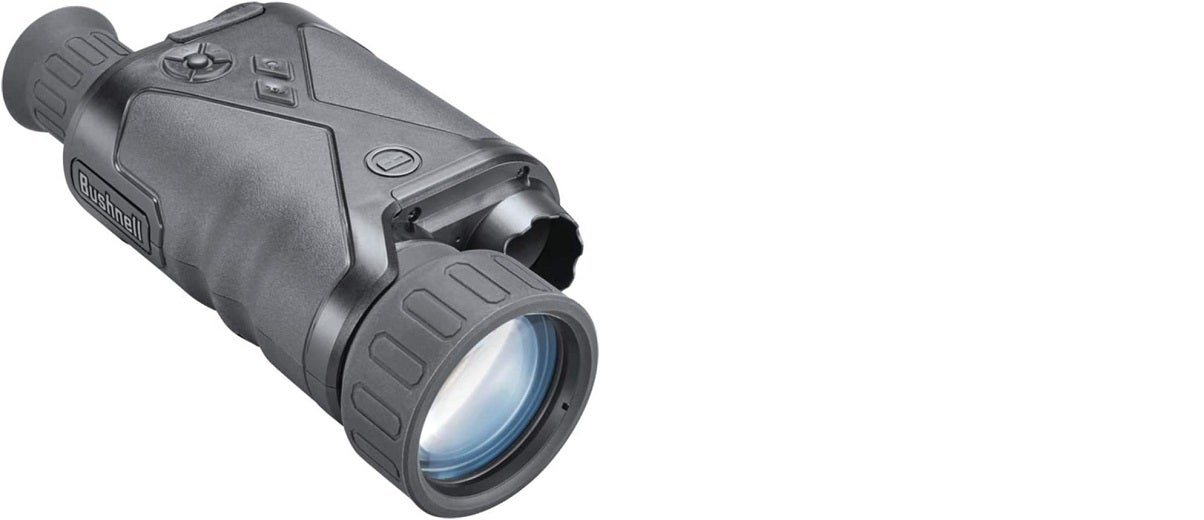
NVGs with infrared-assisted light amplifiers strike a great balance between the affordability and fidelity of digital night vision, and the reliability and instant performance of image-intensifying devices. These units use a specialized “CMOS” sensor that, like digital night vision, captures light – except in this case, it’s not amplifying anything. Instead, it uses its own source of infrared light to illuminate the image it captures.
IR is invisible to most animals and the naked eye, but when captured by an IR-capable sensor, it functions just like any flashlight or lamp.
Pros
IR illumination produces a vastly superior image, even when compared to military NVGs. That’s because the camera sensor gets to pick up way more photons of light – we simply can’t see it unaided. Because the IR light reflects off objects like visible light, the resulting contrast and image clarity is unparalleled. The eyes of a deer or hog will light up like lightbulbs, and moving targets tend to glow brightly against wooded and grassy backdrops. Many IR NVGs are even more affordable than digital devices, too. A decent model from Bushnell will range between $300 and $500.
Cons
IR night vision devices are heavier and bulkier than other types of NVGs. That’s because in addition to powering a camera, specialized sensor, and screen, it has to provide power for a big, infrared flashlight. Units with smaller IR lights won’t perform as well, either. So, it’s always a balance of bulk and cost vs. performance and battery life.
Night Vision – Thermal Image Intensifiers

For those of you who want true “Predator vision,” here it is: thermal image intensifiers are the king of low-light fidelity. Or, no-light fidelity. They don’t need any light at all – they convert the radiation from ambient heat into a crisp image.
Also called “FLIR,” or “Forward Looking Infrared,” thermal image intensifiers function like IR-illuminated NVGs. Except their sensors are so sensitive they don’t need special illumination. They simply pick up and convert the minuscule amount of radiation produced by heat (or lack of it) into a visible form of light. Heat and radiation are, after all, just light that’s invisible to us humans.
FLIR can convert that radiation into different types of visible light. Some output “white-hot” or “black-hot” displays, which means the hotter the object, the brighter or darker it becomes relative to its surroundings. Other types of thermal sensors convert their photons into vibrant hues ranging between red, orange, green, purple, and blue.
Pros
Nothing beats the fidelity and contrast – and cool factor – of a thermal scope or binocular. It is nearly sci-fi in its capability and appearance. The clarity of high-end thermal sensors provides proper “HD”, with a sharp 720p or 1080p picture. In the context of hunting, game is impossible to miss. It’ll always be brightly colored, sharp and focused, and blindingly bright against the colder backdrop. Thermal image sensors are fast, suffering little to no latency. High-end thermal optics can provide targeting data that’s accurate and fast enough for confident shots to be placed downrange.
Cons
Thermal scopes are big and heavy. They’re more compact than IR illuminators, but they’re bigger tan digital NVGs and low-light image intensifiers. They’re typically as expensive as image intensifiers, too — a decent FLIR scope costs $2,000 to $5,000.
